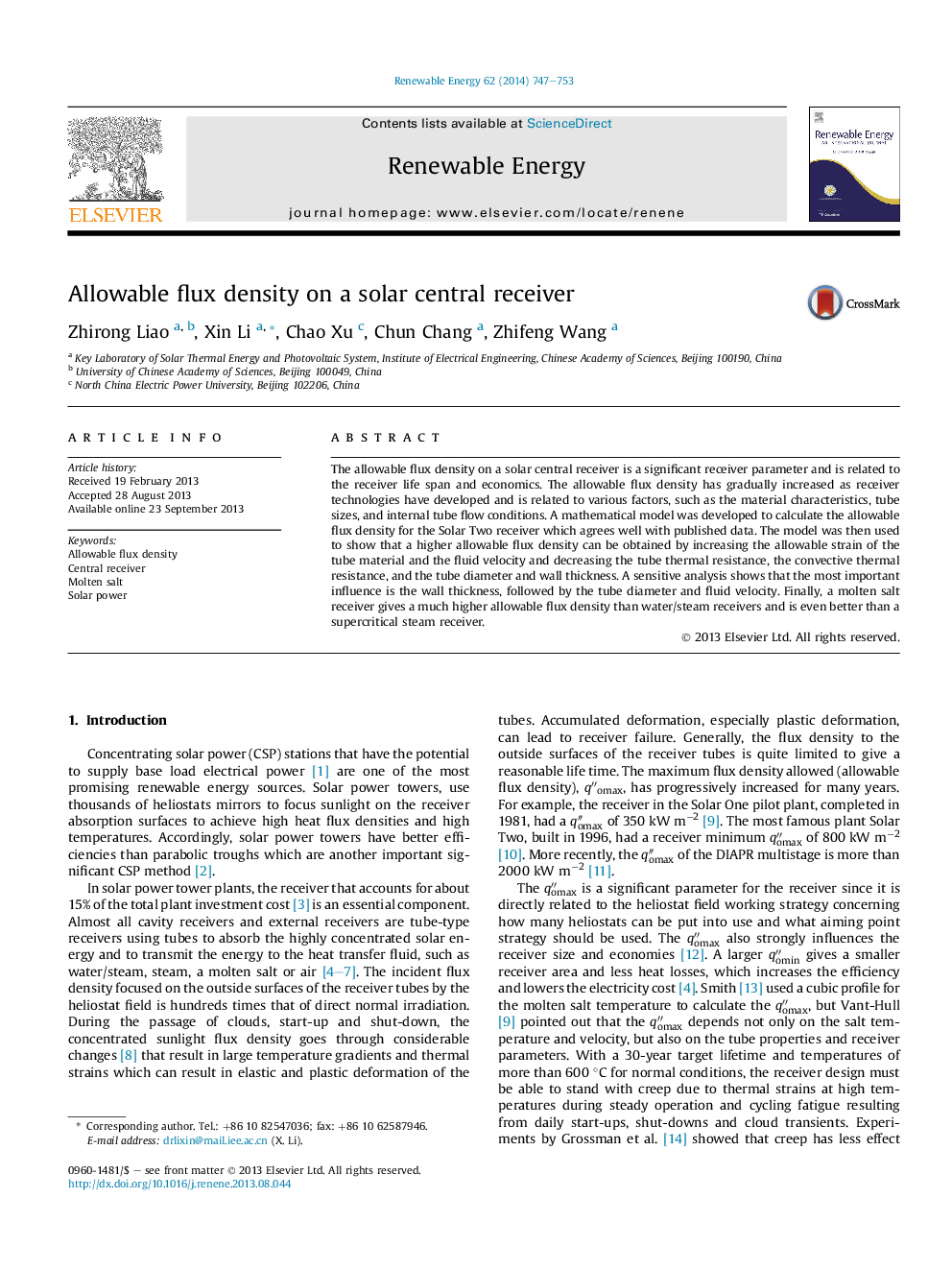| Article ID | Journal | Published Year | Pages | File Type |
|---|---|---|---|---|
| 6769348 | Renewable Energy | 2014 | 7 Pages |
Abstract
The allowable flux density on a solar central receiver is a significant receiver parameter and is related to the receiver life span and economics. The allowable flux density has gradually increased as receiver technologies have developed and is related to various factors, such as the material characteristics, tube sizes, and internal tube flow conditions. A mathematical model was developed to calculate the allowable flux density for the Solar Two receiver which agrees well with published data. The model was then used to show that a higher allowable flux density can be obtained by increasing the allowable strain of the tube material and the fluid velocity and decreasing the tube thermal resistance, the convective thermal resistance, and the tube diameter and wall thickness. A sensitive analysis shows that the most important influence is the wall thickness, followed by the tube diameter and fluid velocity. Finally, a molten salt receiver gives a much higher allowable flux density than water/steam receivers and is even better than a supercritical steam receiver.
Related Topics
Physical Sciences and Engineering
Energy
Renewable Energy, Sustainability and the Environment
Authors
Zhirong Liao, Xin Li, Chao Xu, Chun Chang, Zhifeng Wang,
